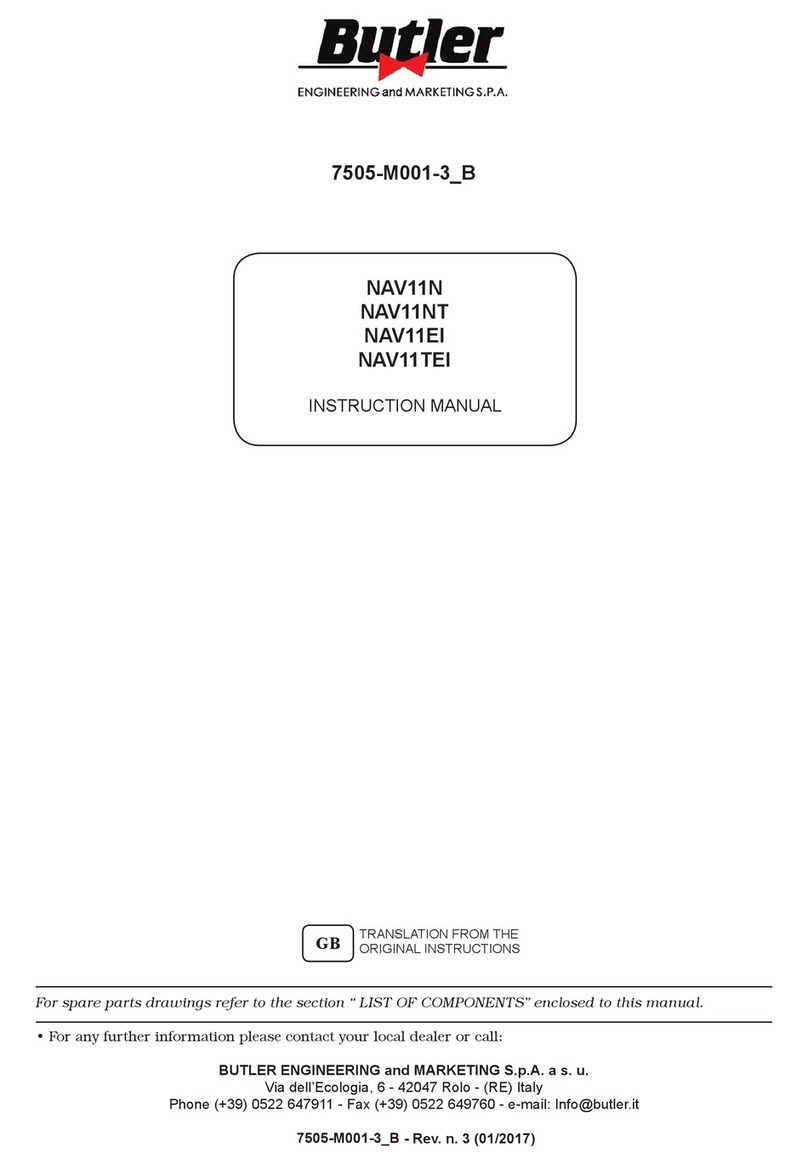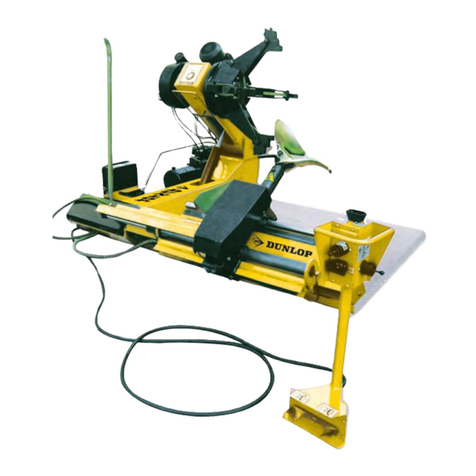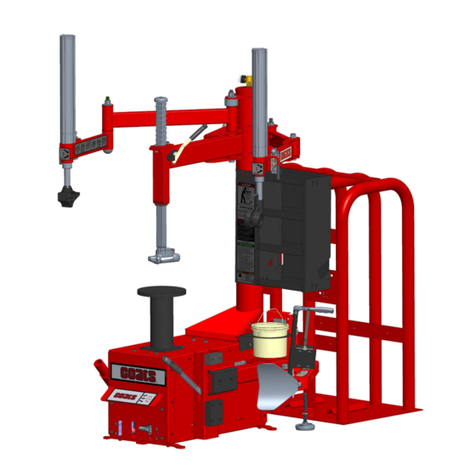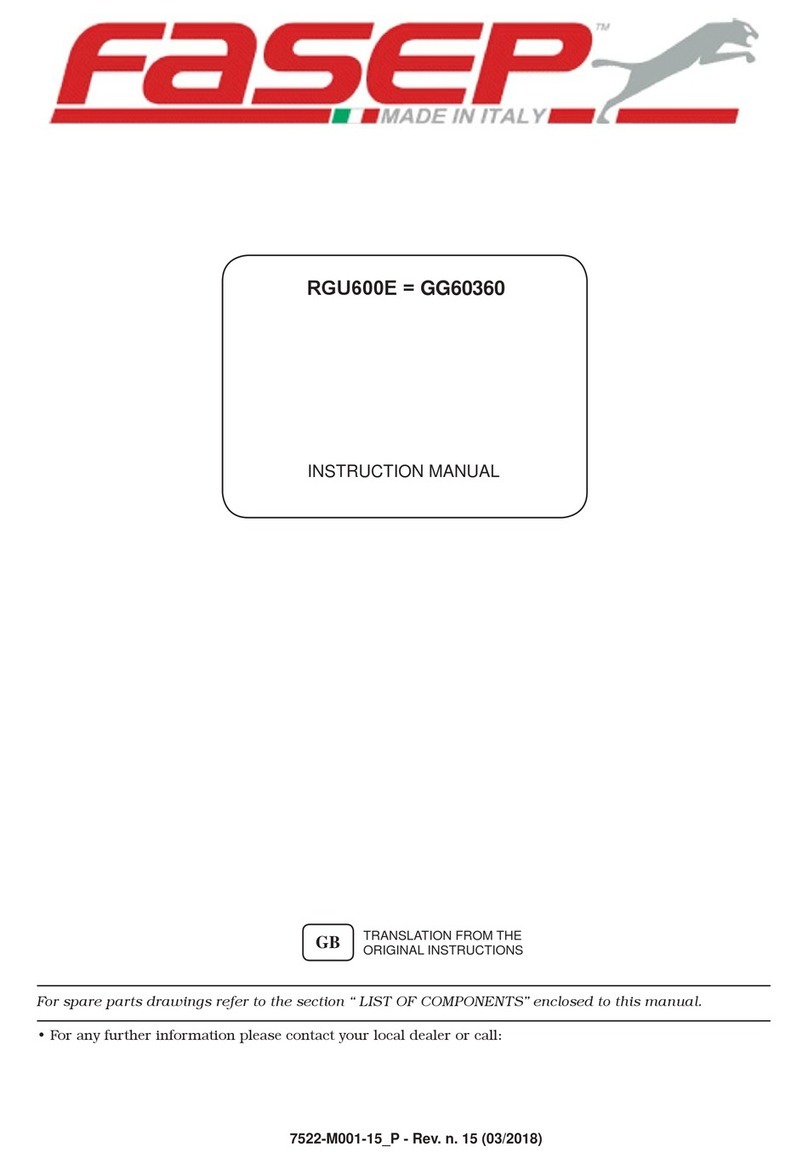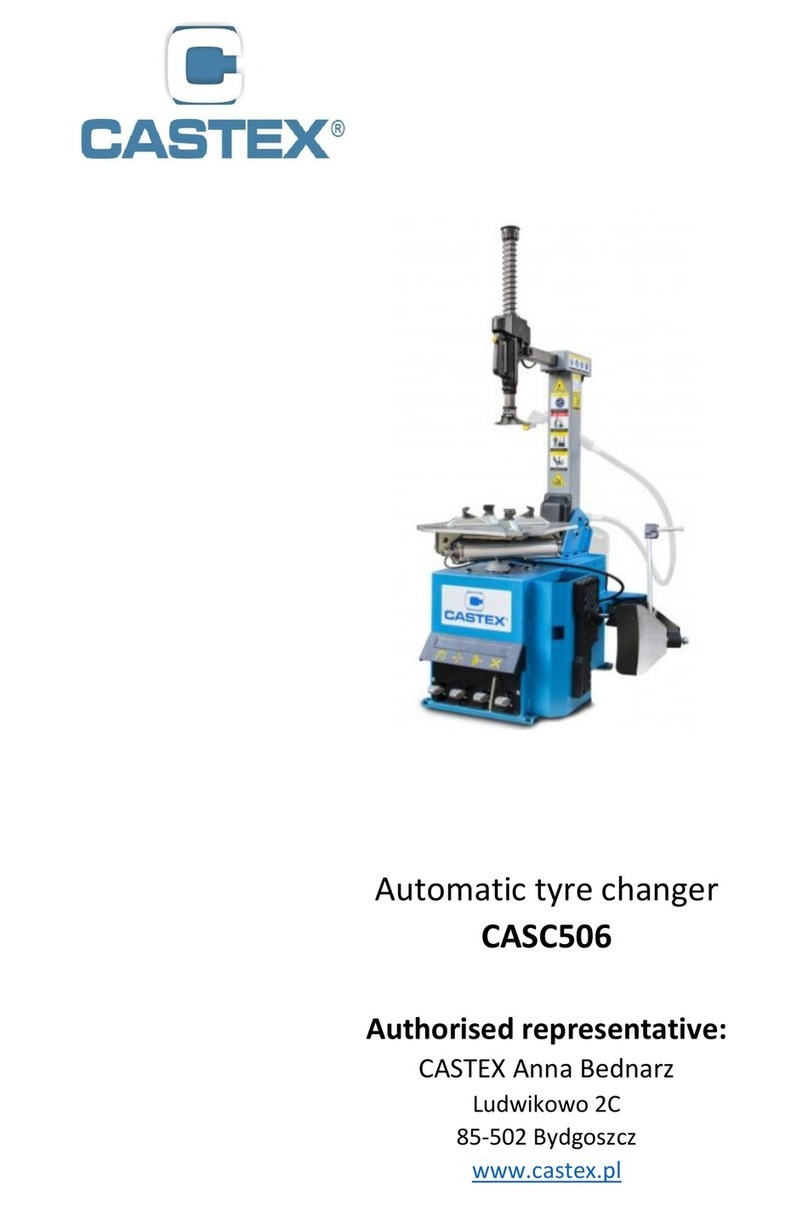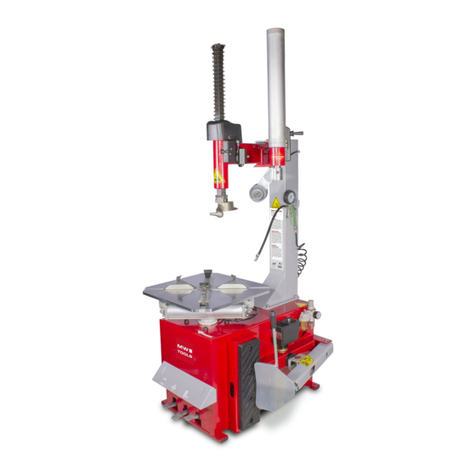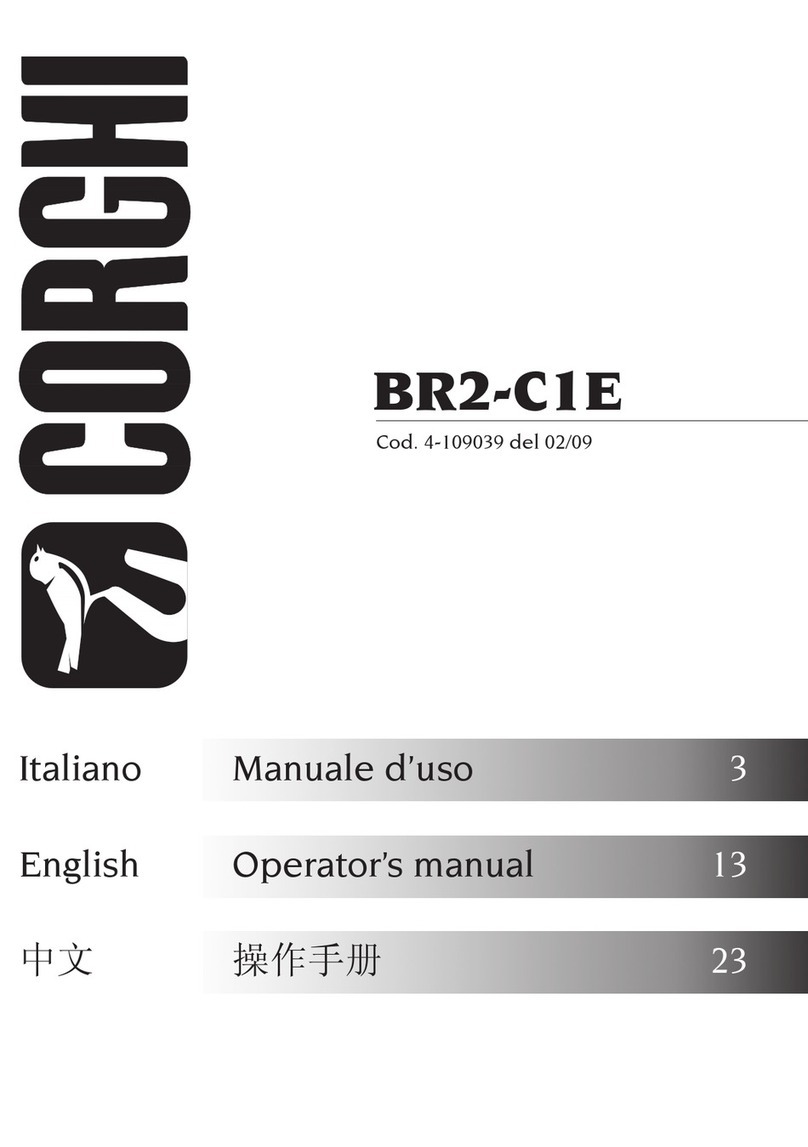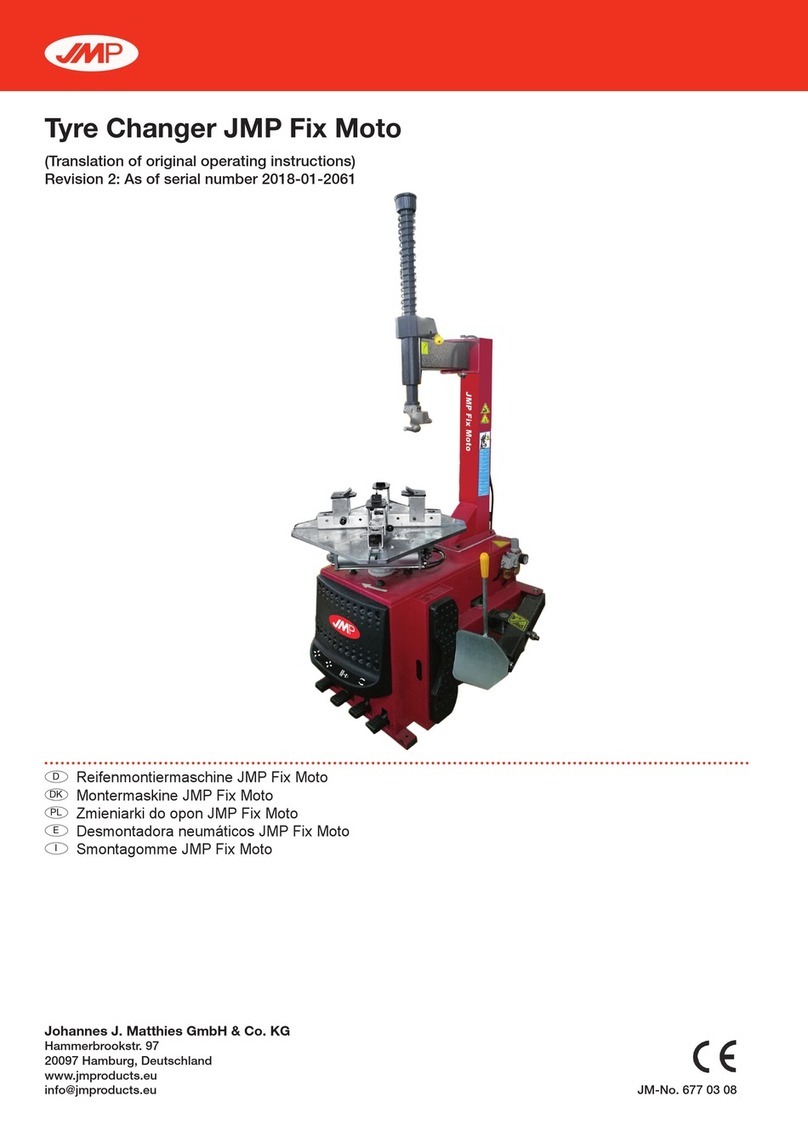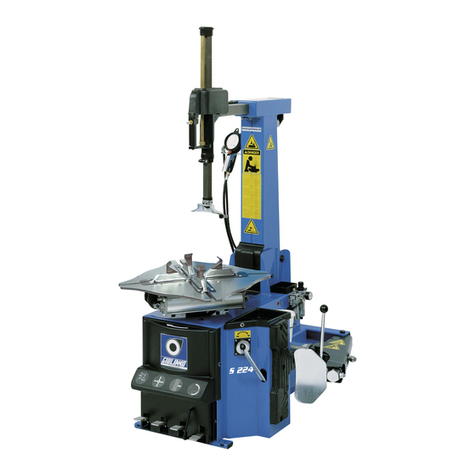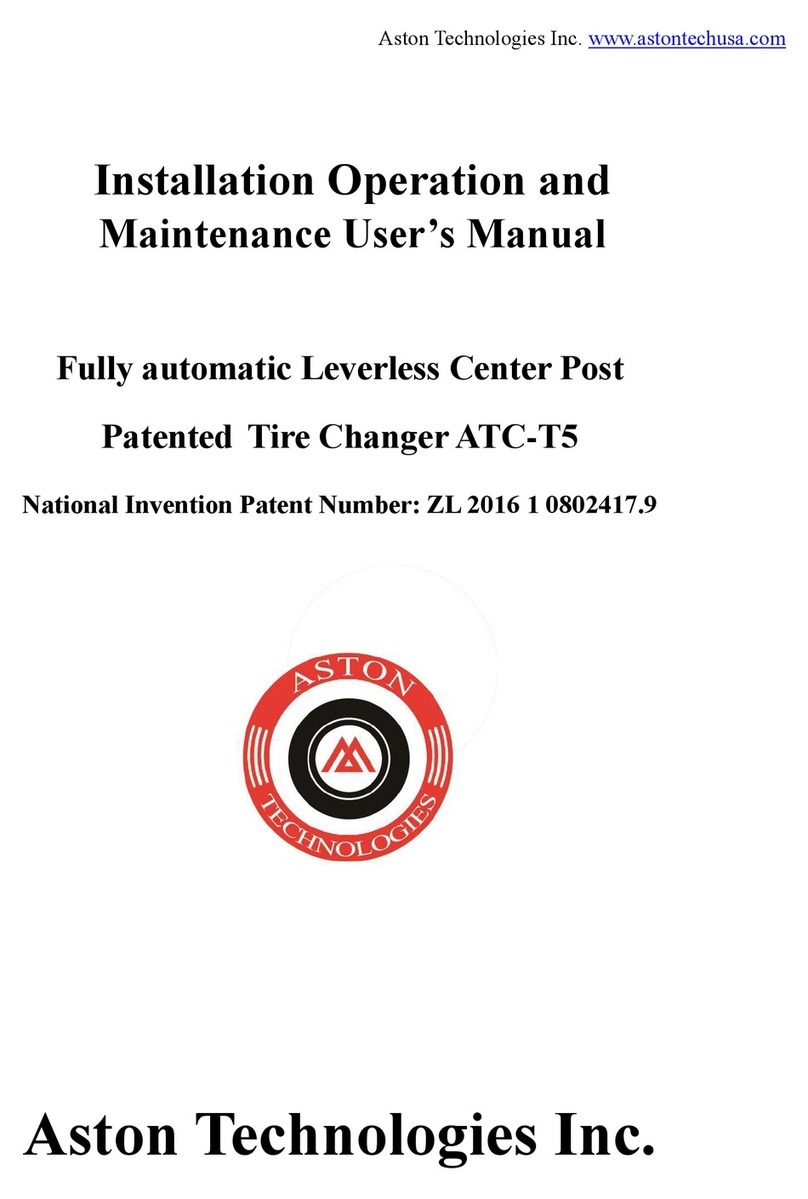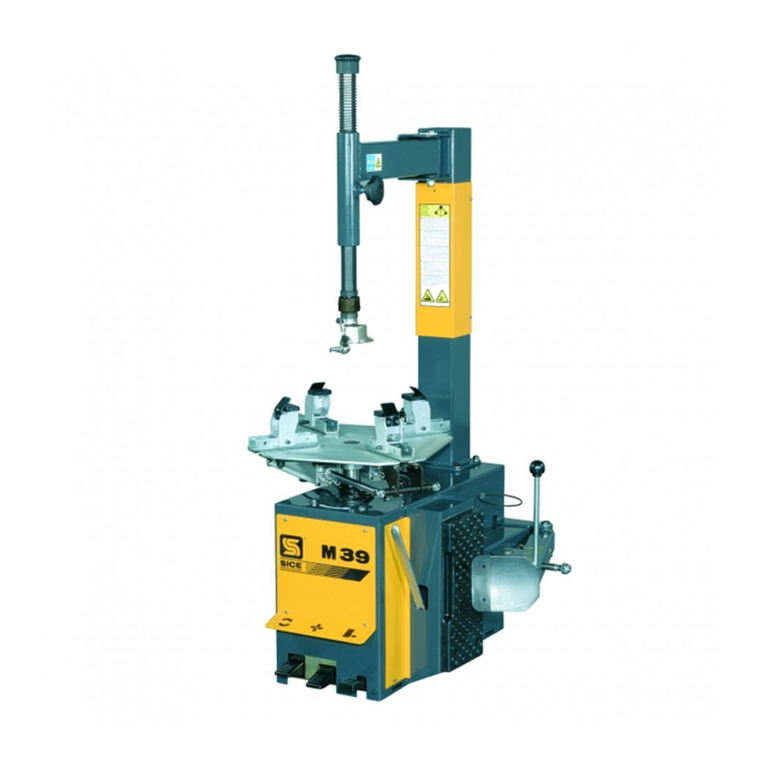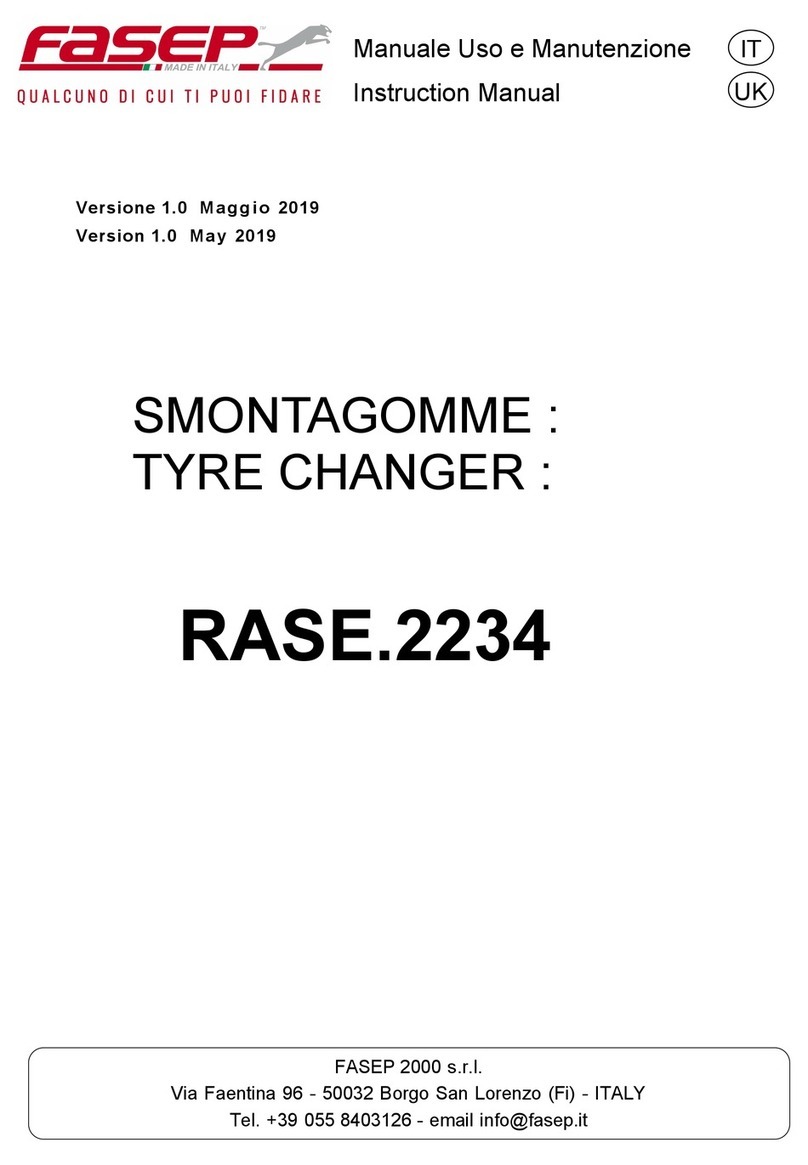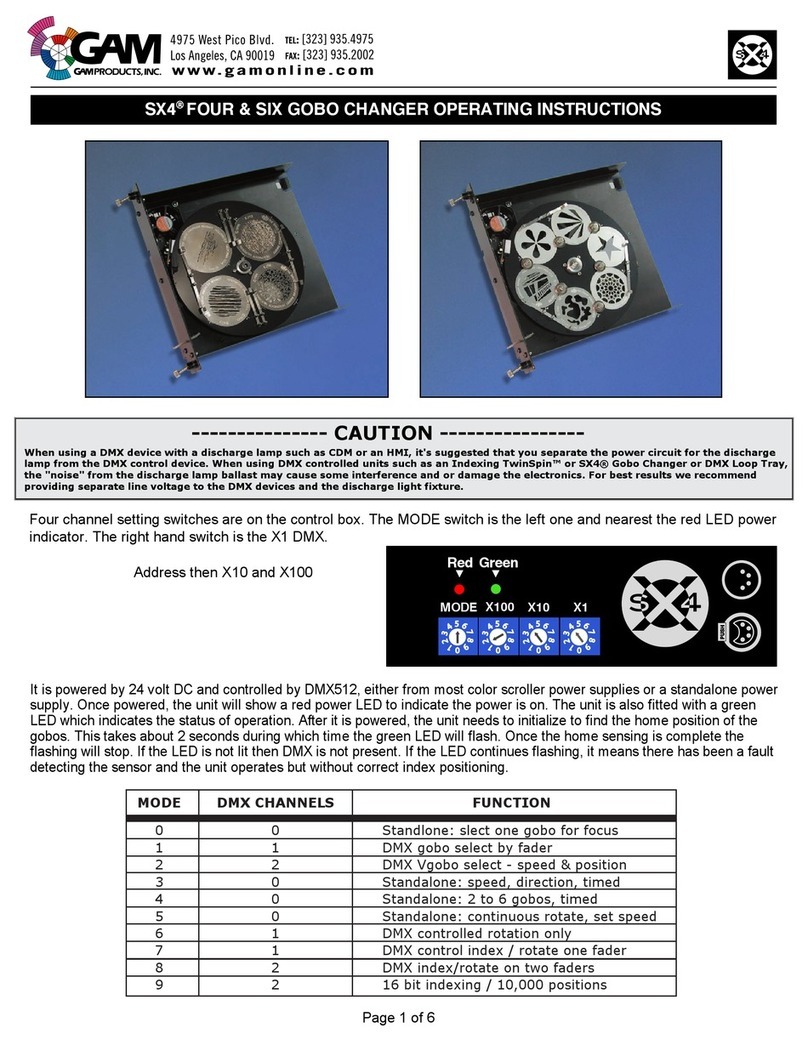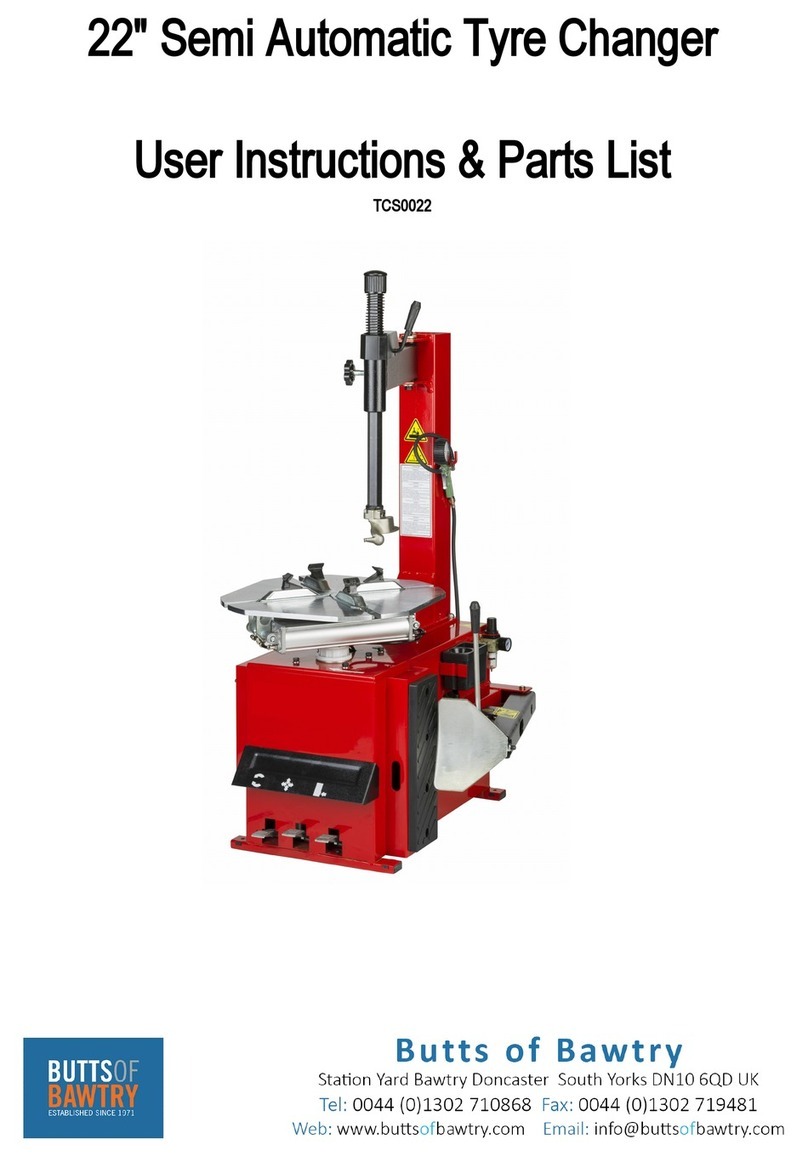2
Instructions for use of the tyre assembly system.
INDEX
1. Introduction ...............................................................................................................................2
2. General safety rules................................................................................................................. 33
.................................................................................................................................................... 3
3. Technical data......................................................................................................................... 33
.................................................................................................................................................... 3
4. Transport................................................................................................................................ 34
.................................................................................................................................................... 3
5. Rozpakowywanie ..................................................................................................................... 44
.................................................................................................................................................... 4
6. Workplace............................................................................................................................... 44
.................................................................................................................................................... 4
8. Installation method.................................................................................................................. 66
.................................................................................................................................................... 6
9. Pneumatic connector: .............................................................................................................. 66
.................................................................................................................................................... 6
10. Electrical connector................................................................................................................ 67
.................................................................................................................................................... 6
11. How the device is used. ........................................................................................................ 77
.................................................................................................................................................... 7
12. Preparing for use. ................................................................................................................. 77
.................................................................................................................................................... 7
13. Instructions for use................................................................................................................ 78
.................................................................................................................................................... 7
13.1 Loosening the tyre edging ................................................................................................ 88
................................................................................................................................................ 8
13.2 Tire....................................................................................................................8crimping 8
................................................................................................................................................ 8
13.3 Removing the tyre ........................................................................................................... 89
................................................................................................................................................ 8
13.4 Tyre assembly ..................................................................................................................... 99
.................................................................................................................................................... 9
13.4.1 Checking the tyre and wheel rims. Fig. 9 ..........................................................................
99.......................................................................
9
13.4.2 Tyre assembly .............................................................................................................910
................................................................................................................................................ 9
13.5. Pumping a threadless wheel (without the use of a special device for pumping heatless tyres)
...............................................................................................................................................1010
.................................................................................................................................................. 10
13.6 Pumping of driverless tyres (using a device for this type of tyre) .........................................1011
.................................................................................................................................................. 10
14. Storage..............................................................................................................................1112
.................................................................................................................................................. 11
15. Maintenance.......................................................................................................................1113
.................................................................................................................................................. 11

